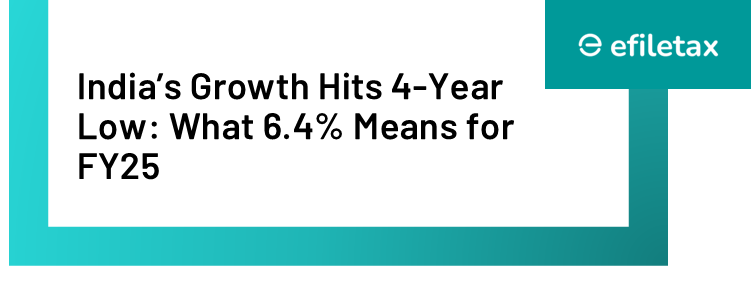
India’s Economic Growth: Navigating a Four-Year Low
India’s economic growth for FY25 is projected at 6.4%, marking the lowest in four years, a sharp contrast to the 8.2% growth recorded in FY24. According to the National Statistics Office (NSO), Real GDP at constant prices is estimated to rise to ₹184.88 lakh crore from ₹173.82 lakh crore, reflecting tempered economic activity.
This deceleration has sparked debates on the need for strategic measures to revitalize the economy, particularly in light of global uncertainties and domestic challenges. Below, we break down the key drivers, challenges, and potential policy responses shaping this critical fiscal year.
Key Indicators of FY25 Economic Performance
| Indicator | FY25 Estimate | FY24 Performance |
|---|---|---|
| Real GDP Growth | 6.4% | 8.2% |
| Nominal GDP Growth | 9.7% | 9.6% |
| Private Final Consumption (PFCE) | 7.3% | 4.0% |
| Govt Final Consumption (GFCE) | 4.1% | 2.5% |
Private consumption remains a bright spot, with household spending showing resilience. However, government consumption and investment need focused interventions to sustain economic momentum.
Why Is Growth Slowing?
- Global Economic Headwinds: Sluggish global trade and geopolitical tensions have dampened export growth.
- Domestic Challenges: High inflation and elevated borrowing costs have constrained consumer and business spending.
- Industrial Output: The manufacturing sector has faced significant slowdowns, affecting overall productivity.
- Investment Activity: Despite improvements, private investment growth remains below expectations.
Legal and Tax Implications
With the Union Budget around the corner, discussions about stimulating economic growth are intensifying. Economists suggest that tax reforms and benefits could play a pivotal role.
Tax Measures to Boost Growth
- Enhanced Tax Benefits for Households: Increasing the standard deduction and introducing targeted tax relief for middle-income groups.
- Capital Gains Tax Reform: Simplifying the structure to encourage investments in equities and real estate.
- Sector-Specific Tax Incentives: Offering GST rate reductions or exemptions for priority sectors like healthcare and infrastructure.
Case Study: GST Notices and Economic Growth
Recent court rulings, such as the Madhya Pradesh High Court’s judgment on GST cancellation notices, have underscored the importance of fair taxation practices. Transparent and efficient tax administration can enhance investor confidence, fostering economic growth.
What Can Be Expected in the Upcoming Budget?
- Increased Capital Expenditure: Higher outlays on infrastructure to stimulate employment and demand.
- Consumption-Boosting Measures: Offering rebates or exemptions on essential goods and services.
- Monetary Policy Adjustments: Potential rate cuts by the RBI to ease borrowing costs.
A Balanced Path Forward
While the economic slowdown in FY25 is concerning, it presents an opportunity for targeted reforms to address structural bottlenecks. Strategic measures focusing on consumption, investment, and tax reforms could set the stage for a more robust recovery in the coming years.
India’s growth story remains resilient, but proactive policymaking is essential to navigate these challenging times.
Closing Thoughts
Understanding the intricate dynamics of economic growth and taxation can empower individuals and businesses to adapt and thrive. Stay updated on the latest tax reforms and economic policies with Efiletax, your trusted partner for navigating India’s financial landscape.